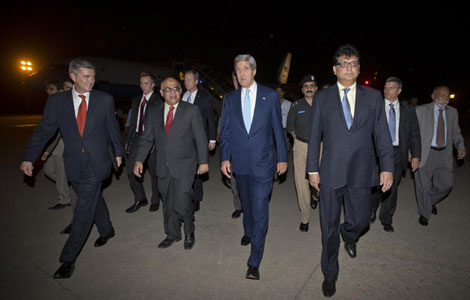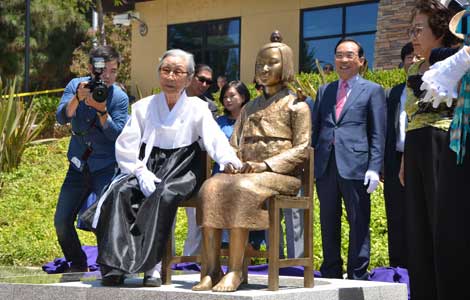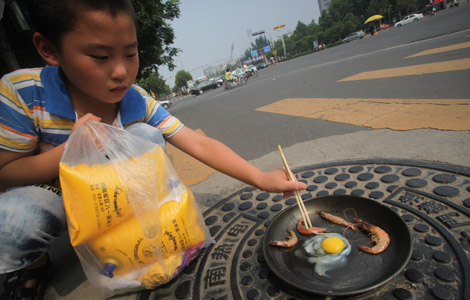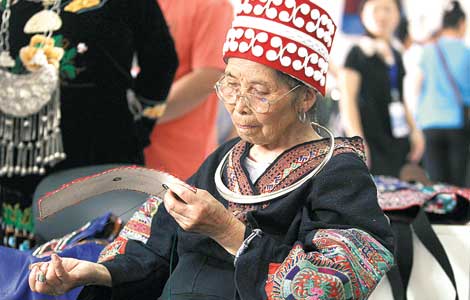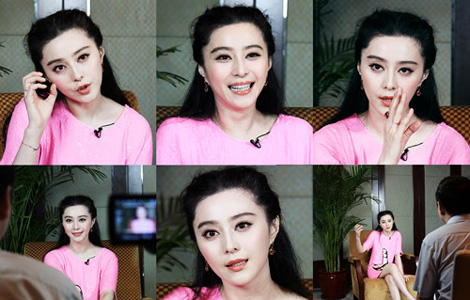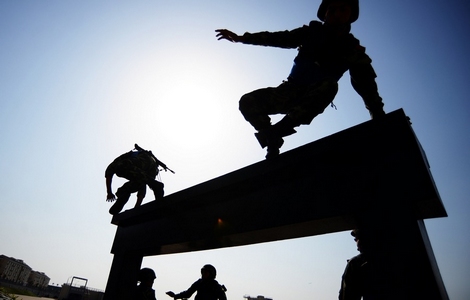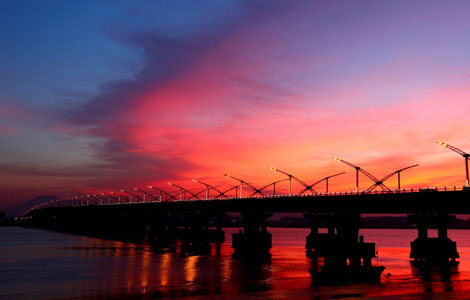Long march and unending victories
Updated: 2013-08-01 07:45
By Mahbubur Rahman (China Daily)
|
||||||||
Aug 1 is Army Day in the People's Republic of China. The People's Liberation Army was founded on this day in 1927 through a bloody uprising in Nanchang, capital of Jiangxi province. The PLA has undergone a long evolutionary process since then. And the history of China's revolution is the history of the Communist Party of China and the People's Liberation of Army, the vanguards of the revolution. Modern China, the CPC and the PLA are synonymous.
The PLA has its genesis in the Red Army. It took different names at different times and in different theatres of operation, such as the New Fourth Route Army and the Eighth Route Army, all of which combined to form the PLA. The PLA encompasses all the organs and elements of China's armed forces - the army, navy, air force and the Second Artillery.
The Red Army, in course of its guerilla warfare, undertook the historic Long March to withdraw from the battlefront to thwart the Kuomintang's design of annihilating the communists. The epic Long March (changzheng) covered more than 10,000 kilometers, fighting the enemy all the way from the mountains of Jinggangshan in Jiangxi to the plains of Yan'an in Shaanxi province. It crossed dense forests, marshes, grasslands, narrow valleys, steep gorges and snowcapped mountains on its path, fighting guerilla battles all the way.
This great army was led by great commanders like Mao Zedong, Zhou Enlai, Zhu De, Chen Yi, Peng Dehuai, He Long, Nie Rongzhen, Ye Jianying and Liu Bocheng. I would like to pay my profound tribute to the great warriors of the Long March, many of whom I had the opportunity to meet and interact with.
After the founding of New China, the PLA has been pursuing modernization to develop into an efficient, high-tech force in order to continue safeguarding the country's sovereignty and territorial integrity. And to maintain world peace, the PLA has been participating in UN international peacekeeping missions.
True to its name, the PLA has maintained its people's military character by following what Mao Zedong said - the army is more like the fish and people are more like the water in a river. This has been the ethos of the PLA and the essence of China's civil-military relationship. It has never been isolated from the people, and has played a dominant role in national reconstruction and rescue and relief operations in the aftermath of natural disasters like floods, cyclones, tornadoes, droughts and earthquakes.
The PLA is an all-pervasive force with multidimensional characteristics, a combat-ready force par excellence. I had the opportunity to live with a PLA garrison near Beijing for about a month in mid-1977. Ziaur Rahman, then Bangladesh president, who believed in strong Sino-Bangla relations, had sent me to China to study the Chinese language for my future employment as military attach in the embassy. For my outdoor study (kai men ban xue), Beijing Modern Languages Institute sent me to a PLA unit, where I lived in the barracks with PLA junior commanders.
There was no rank system in the PLA at that time and officers were called commanders and soldiers, or fighters. It was there that I was introduced to Sun Tzu's brilliant war treatise, The Art of War. The PLA unit I lived with was self-sufficient in meeting its needs. It had its own uniform- and shoe-making factories, its own agricultural land to grow grains and vegetables, and its own cattle farm. It also had a pharmaceutical division where it made medicines to meet the unit's needs, selling the surplus outside.
Bangladesh pursues a no-aggression defense policy but is determined to defend every inch of its land. To achieve military deterrence in land, air and sea, Bangladesh was looking for friendly countries in the mid-1970s that could help it strengthen its defense capability. China, whose ties with Bangladesh go back to ancient times, came forward to help it do so after Bangladesh opened its embassy in Beijing in October 1975. Along with political and economic relations, the two countries also started their defense cooperation.
The PLA has remained a people's force despite its modernization and technological advancement. In having the PLA, according to Chairman Mao, China and its people have everything. As Mao said: "Without a people's army the people have nothing."
The author is a retired lieutenant general and former chief of staff, Bangladesh Army.
(China Daily 08/01/2013 page9)
Most Viewed
Editor's Picks
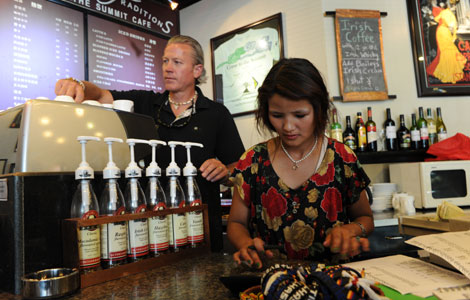
|

|
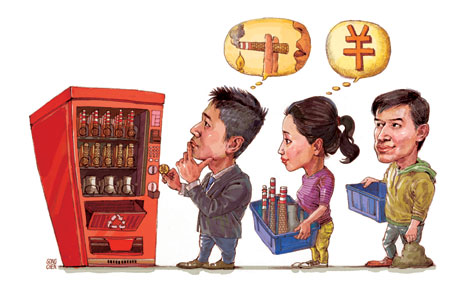
|

|

|

|
Today's Top News
UN to probe alleged Syria chemical attacks
Saudi blogger faces lashes for 'insulting Islam'
7.5% GDP growth 'in reach' this year
Surveillance plan files declassified
Memorial a tribute to WWII 'comfort women'
Xi vows to protect maritime interests
Hollywood unpaid for movies
Steel industry eyes plans to resolve oversupply
US Weekly

|

|
